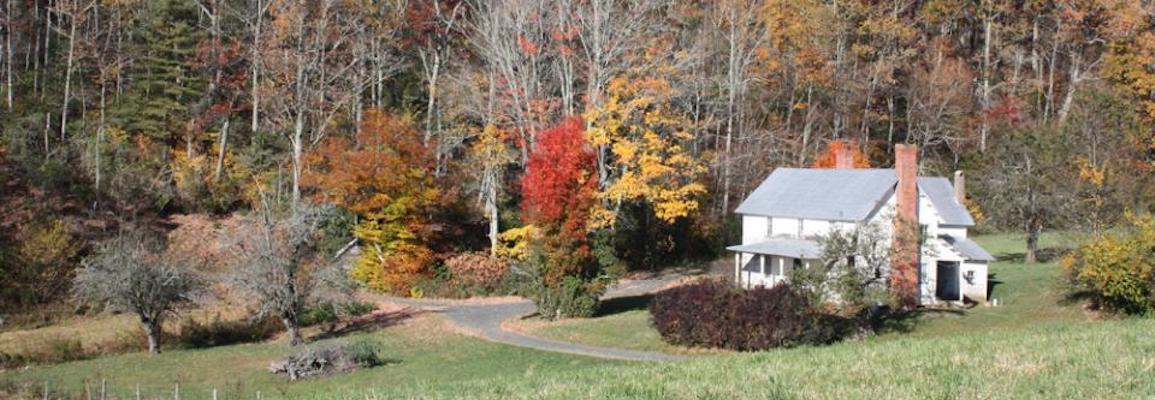About the Blackburn Vannoy Farm
The Blackburn Vannoy Farm is a 369-acre farm protected by the Blue Ridge Conservancy.
The farm is in two sections located near Fleetwood. The first tract consists of 157 acres known as the Blackburn home place. It includes an 1880s farm house; a 1960s brick ranch-style home; and a number of outbuildings including a fully functional, 100-year-old barn. An additional 24 acres of land has been obtained by the trust to be used as the gateway to the farm.
The second tract consists of 185 acres bordering Dick Phillips Road and Will Vannoy Road. This property also has an 1880s farm house and a combination of forested area and pasture.
Appalachian State University is the sole owner of both tracts and uses the properties for educational purposes.
The Blackburn-Vannoy farm sites are prime examples of rural Southern Appalachian cultural landscapes. Some of tell-tale characteristics include bottomland pastures used for cattle grazing, steep hillsides that become wooded at higher elevations, and little to no use of fencing. The properties also exhibit beautiful historic buildings, ranging from the farmhouse to barns and outhouses, all dating back between 1880 and 1920. This gives us an exceptional window through time into the lifestyle of those living in the Blue Ridge physiographic region circa the turn of the 20 th century.
The Blackburn-Vannoy properties were donated to Appalachian State University by Mrs. Buelah Blackburn-Vannoy and Mr. Reeves Vannoy in 2002. Their last wishes were to preserve the areas natural, historical, and cultural significance. In total the properties cover 369 acres with land cover ranging from pasture to mixed hardwood, wetlands and South Fork River tributaries, which are currently under the protection of the Blue Ridge Conservancy.
As the sole proprietor of these land parcels, Appalachian State University seeks to preserve, restore, and manage these assets sustainably. To this end, the properties are used as historic teaching farms enabling the upkeep of the land through continued sustainable farming practices and research based preservation initiatives to maintain the cultural authenticity of the area. These sites are valuable for promoting learning in sustainable development, appropriate technology, ecology, anthropology, forestry, biology, geology, history, and geography just to name a few.
Contact
Dr. Christine Hendren
hendrenco@appstate.edu

